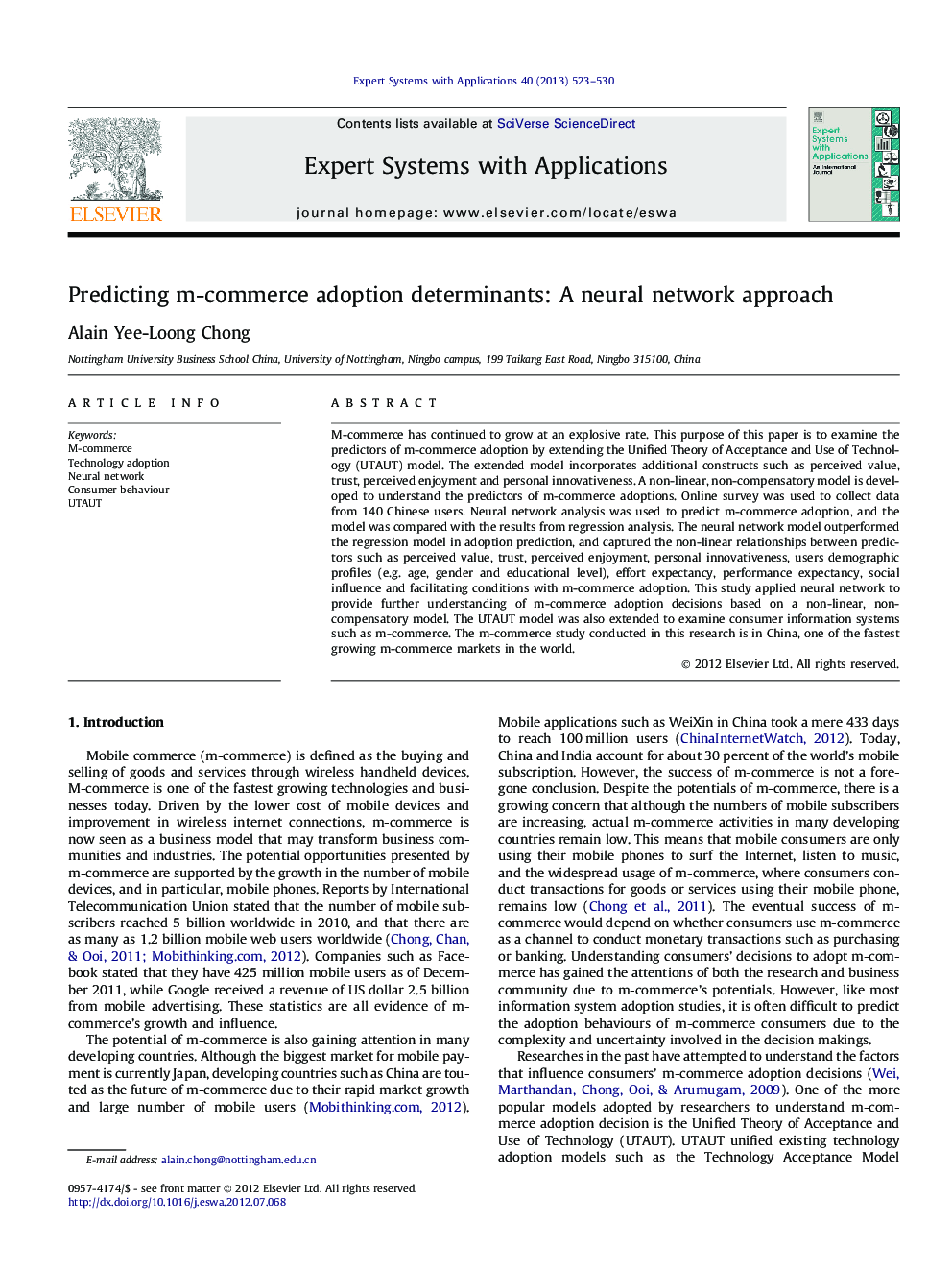| Article ID | Journal | Published Year | Pages | File Type |
|---|---|---|---|---|
| 383206 | Expert Systems with Applications | 2013 | 8 Pages |
M-commerce has continued to grow at an explosive rate. This purpose of this paper is to examine the predictors of m-commerce adoption by extending the Unified Theory of Acceptance and Use of Technology (UTAUT) model. The extended model incorporates additional constructs such as perceived value, trust, perceived enjoyment and personal innovativeness. A non-linear, non-compensatory model is developed to understand the predictors of m-commerce adoptions. Online survey was used to collect data from 140 Chinese users. Neural network analysis was used to predict m-commerce adoption, and the model was compared with the results from regression analysis. The neural network model outperformed the regression model in adoption prediction, and captured the non-linear relationships between predictors such as perceived value, trust, perceived enjoyment, personal innovativeness, users demographic profiles (e.g. age, gender and educational level), effort expectancy, performance expectancy, social influence and facilitating conditions with m-commerce adoption. This study applied neural network to provide further understanding of m-commerce adoption decisions based on a non-linear, non-compensatory model. The UTAUT model was also extended to examine consumer information systems such as m-commerce. The m-commerce study conducted in this research is in China, one of the fastest growing m-commerce markets in the world.
► Predictors of m-commerce adoption were examined in this research. ► The UTAUT model was extended by incorporating perceived value, trust, perceived enjoyment and personal innovativeness. ► Neural network was developed to examine the research model. ► Results showed that neural network can offer better predictions than multiple regression model. ► Our approach helps decision makers formulate appropriate strategies for m-commerce implementation in the Chinese industry.
